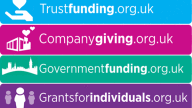Fundraising, Direct and digital marketing
5 top tips on putting your supporters at the heart of your digital fundraising
Fundraising Fair trainer Ruth Smyth shares some of the ways you can involve your supporters in digital fundraising
Digital fundraising can be a tricky field to navigate, however getting your supporters on-board can pay huge dividends. Our Fundraising Fair trainer Ruth Smyth shares the benefits and methods of putting your supporters at the heart of your digital fundraising!
Involve them!
This sounds so obvious and yet it’s often overlooked or not done because it involves extra resources. But in my experience involving supporters or potential supporters in digital development always makes the end product better. You really don’t have to talk to many people to get a good idea about whether an idea makes sense or a tool is easy to use. We typically carry out user research with a small number of people (5 or 6 for each audience group) but speak in-depth to each one to understand what they think of the concept being developed and where it might fit into their lives.
Remember you are not your audience (you know too much)
It can be very tempting to use staff of the charity to get feedback on ideas, and this is useful, but only up to a point. One of the main problems with speaking only to internal people is that they are already familiar with your jargon, and organisations tend to evolve an internal language full of this. The great thing about involving people outside your charity is that they soon spot words that are unclear or ambiguous. Getting the language right is a big part of making great supporter experiences that are inspiring and easy to use.
Unleash your analytics
Google analytics can be a great tool for understanding how people are interacting with you online, but people often get stuck with how best to use it. Part of the problem is that there is so much data it can be hard to know where to start. If this applies to you then take some time to work out which key actions you’d like people to take and check you are tracking these using events (and with funnels if they are multi-step processes). If you can, then get someone to really delve into your Google Analytics and report on how this changes over time, by device and by different entrance routes.
Also make sure you document how things are set up. That will make it easier for anyone new to use the account, and make it quick to get back into if you haven’t looked at it for a while. Noting important events on the timeline can help with this too and explain any data that looks different, so you don’t revisit why this is again and again!
Be a little picky about when you need it
Not every digital project requires lots of audience research, so make sure you identify when it is important. If a concept is new then it will often make a big difference to involve users. Equally, if the audience is different to your typical supporter it can also be very valuable. For example, research we have carried out with specific groups such as children, runners and in-memory donors has been especially useful.
Listen & act on it
Finally, it is only worth doing research or analysis if you are prepared to change things as a result. Sometimes this isn’t possible due to resource or technical constraints, other times there may be internal reasons that people aren’t prepared to make changes. Just remember you will only get the most from the research if you are open to change based on it. If you are able to do this the rewards can be huge, for example one of our projects let to a 20% increase in donation conversions, by designing the process based on user research.
